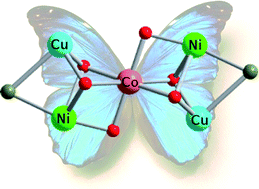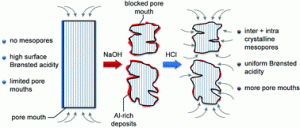Zhien Lin and collegues from Sichuan University, China have developed a promising open-framework beryllium phosphite in this CrystEngComm Hot article.
The team made (C2H8N)2[Be3(HPO3)4], referred to as BeHPO-1, which was found to have a low density, integrating large 16-ring channels, and an interrupted 3,4-connected framework, and has potential for use in catalysis, separation, and ion-exchange processes.
BeHPO3-1 has a very low-density framework, which is better than other open-framework metal phosphates, and similiar to mesoporous germanate SU-M.
The authors were particularly excited to discover both left- and right-handed helical channels in the structure and hope that this material will be ‘a step forward toward the rational construction of new open-framework inorganic solids with low densities’
Read the full article to find out more about this beryllium-containing open framework…
 (C2H8N)2[Be3(HPO3)4]: a low-density beryllium phosphite with large 16-membered rings and helical channels
(C2H8N)2[Be3(HPO3)4]: a low-density beryllium phosphite with large 16-membered rings and helical channels
Xiuchao Luo, Daibing Luo, Maochu Gong, Yaoqiang Chen and Zhien Lin
CrystEngComm, 2011, Advance Article
DOI: 10.1039/C1CE05117B, Communication
FREE TO READ until 4th April












 elated arrays have been achieved on ITO by a ZnO nanorod templating-reaction method under different etching conditions.
elated arrays have been achieved on ITO by a ZnO nanorod templating-reaction method under different etching conditions.
 A novel POM-based 3D self-penetrating MOF containing Mo–N covalent bond has been isolated under hydrothermal conditions, showing an unprecedented (4,6,6)-connected topology assembled from a 2D self-threading skeleton.
A novel POM-based 3D self-penetrating MOF containing Mo–N covalent bond has been isolated under hydrothermal conditions, showing an unprecedented (4,6,6)-connected topology assembled from a 2D self-threading skeleton. A double [2 + 2] photochemical reaction of 1,5-bis(4-pyridyl)-1,4-pentadiene-3-one (1P) was observed with in four co-crystal forms of 1P with the hydrogen bonding template molecule phloroglucinol (PG) or 5-methoxy resorcinol (MR). 1H NMR and the UV-vis spectroscopic studies established a stepwise mechanism for this reaction through the formation of a monocyclobutane intermediate.
A double [2 + 2] photochemical reaction of 1,5-bis(4-pyridyl)-1,4-pentadiene-3-one (1P) was observed with in four co-crystal forms of 1P with the hydrogen bonding template molecule phloroglucinol (PG) or 5-methoxy resorcinol (MR). 1H NMR and the UV-vis spectroscopic studies established a stepwise mechanism for this reaction through the formation of a monocyclobutane intermediate.
 Vanadium oxides with various connectivities of distorted VO6 polyhedra are characterized by tremendous structural diversity, which make them a seemingly huge playground for solid-state chemists.
Vanadium oxides with various connectivities of distorted VO6 polyhedra are characterized by tremendous structural diversity, which make them a seemingly huge playground for solid-state chemists.![Three-dimensional structure of [Cu3(trz)3(OH)3(H2O)4]](https://blogs.rsc.org/ce/files/2011/03/c0ce00919a-f8.gif)
 In this
In this